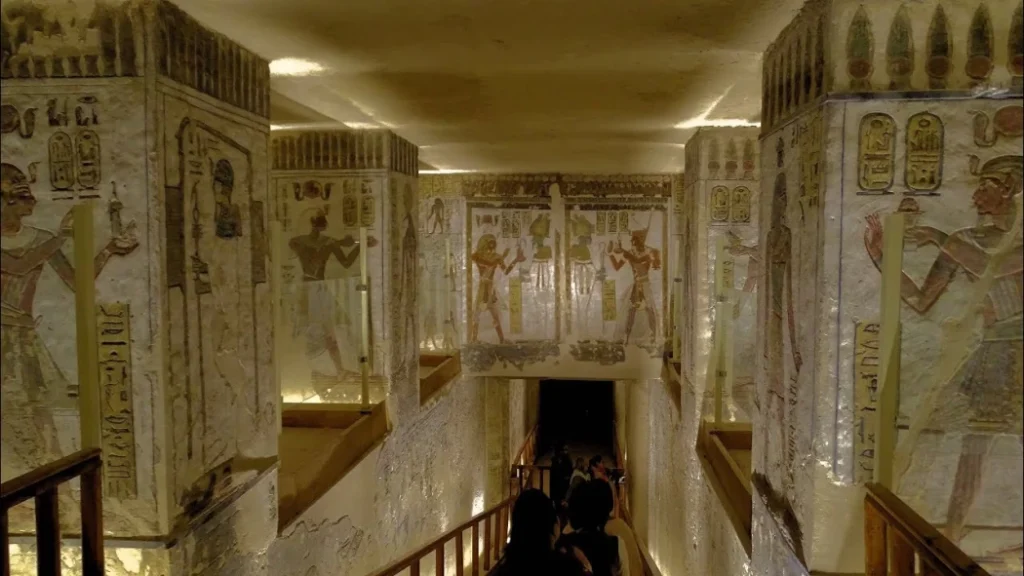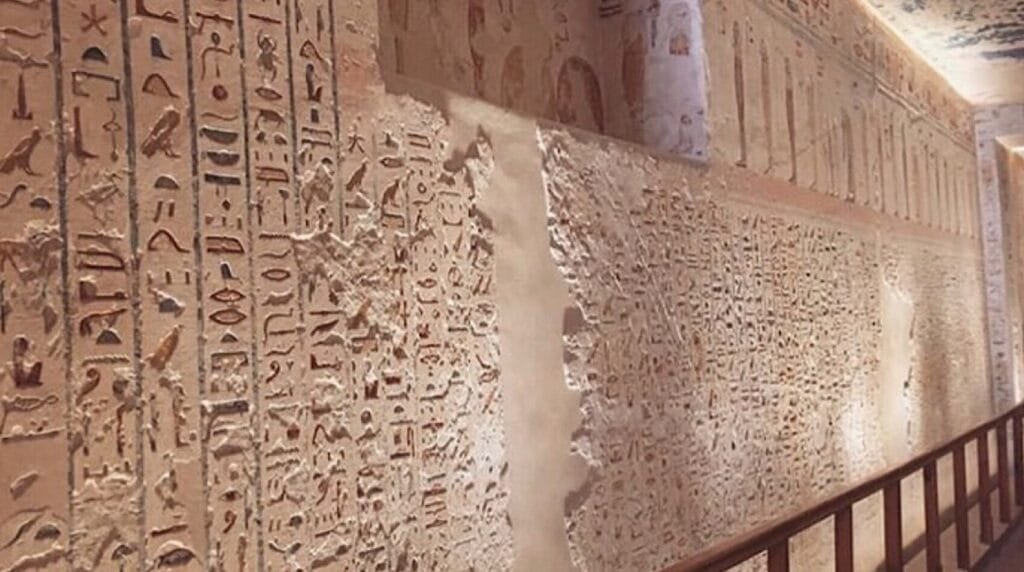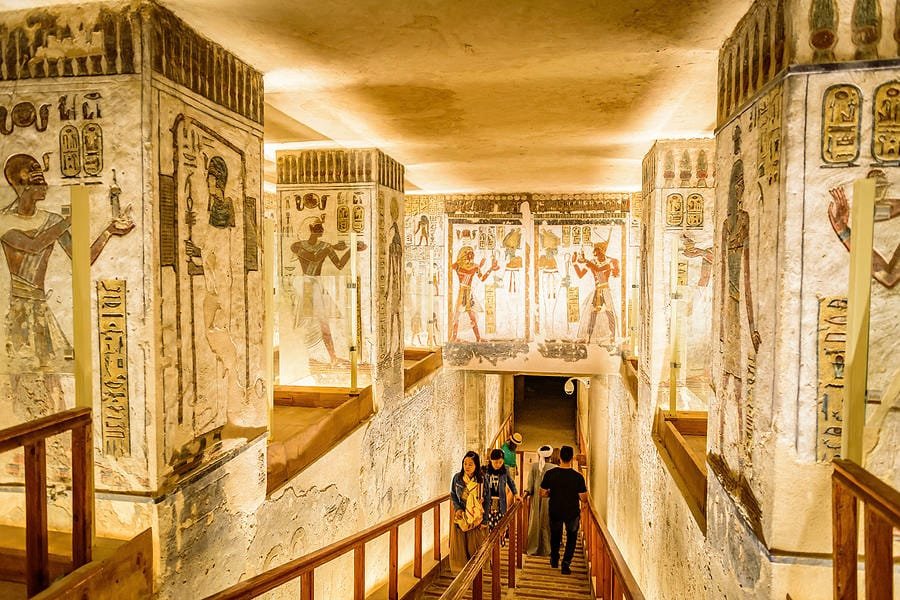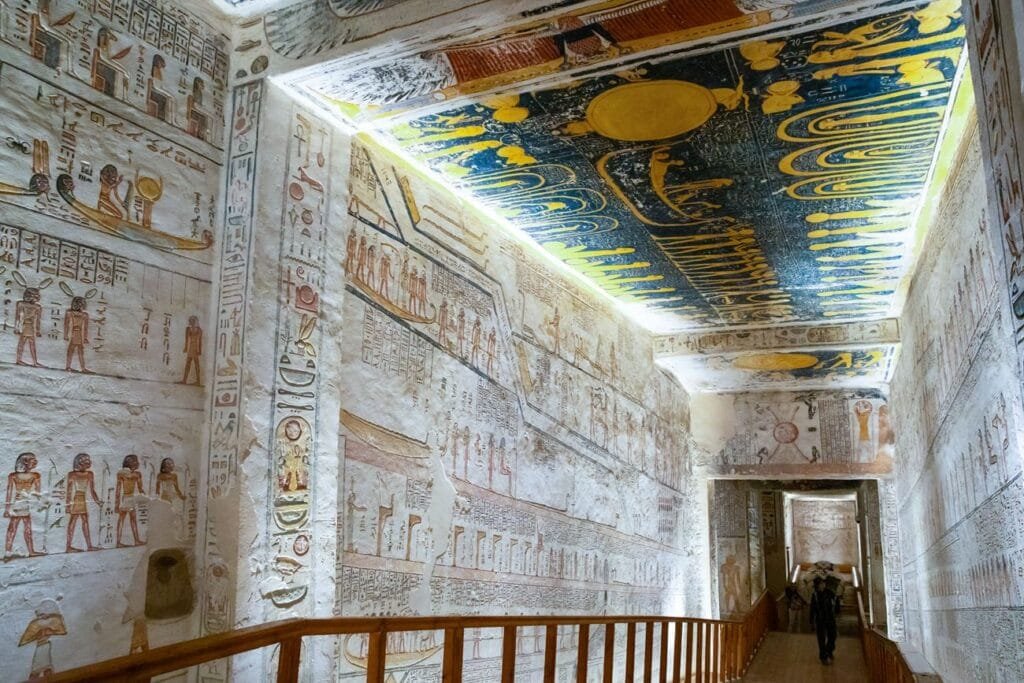The Valley of the Kings, located on the west bank of the Nile in Luxor, Egypt, served as the principal burial ground for the pharaohs of the New Kingdom (1550-1070 BCE). This valley is a significant archaeological and cultural site, with more than 60 tombs, including the famous tomb of Tutankhamun. It was strategically chosen due to its remote location, making it difficult for potential robbers to find and loot the tombs. Unlike earlier pyramids, the tombs here were carved deep into the cliffs of the valley, offering protection against natural erosion and human intrusion.
The valley was named “The Valley of the Kings” as it was the final resting place for Egypt’s rulers during the New Kingdom, including pharaohs like Ramses II, Seti I, and Thutmose III. This burial ground reflects the Egyptians’ religious beliefs about the afterlife, with tombs designed not only as burial places but also as spiritual sanctuaries for the deceased. The pharaohs’ tombs were filled with treasures and artifacts meant to assist them in their journey to the afterlife, a practice that highlights the Egyptians’ deep belief in immortality.
A visit to the Valley of the Kings offers a glimpse into the grandeur of ancient Egyptian civilization, showcasing its sophisticated burial practices and the artistry that adorned these tombs. The discovery of these tombs in modern times has provided archaeologists and historians with an incredible amount of information about Egypt’s royal lineage, culture, and religious practices.








